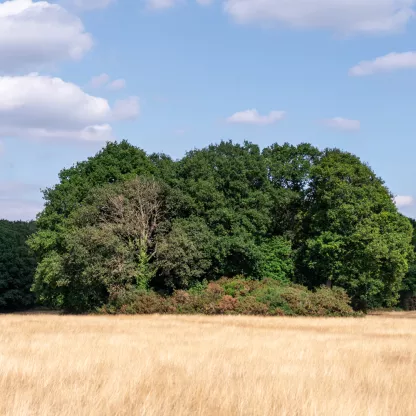Interest rate hikes for the US and Europe are almost certain this week. All major central banks are getting close to calling time on rate increases, but the UK is likely to be the last to do so.

Review of the week: Higher or Lower
Article last updated 23 November 2023.
Quick take:
- UK inflation fell more than expected to 7.9%, sending bond yields sharply lower
- US and European central banks are set to raise rates by 0.25% this week
- Climate change is driving extreme weather all over the globe, combatting it will be hard during a cost-of-living crisis
British inflation has played a brutal game of Higher or Lower with investors. First higher than anyone wished and then, last week when despair reached its peak, much lower than anyone expected at 7.9% for June.
You could almost drink the relief it was so palpable. UK 10-year government bond yields have fallen dramatically from 4.7% a few weeks ago to 4.2% because people now believe the Bank of England will get away with fewer interest rate hikes. That is a huge shift in what should be a stable market for the long-term funding of state debt. But given current volatility, these days we’d we call it just another month.
The fall in inflation is immensely welcome, but there are still reasons to be cautious. CPI was only 30 basis points below the 8.2% that the average economist had expected, yet 7.9% was lower than any of those economists had predicted, according to Bloomberg. Also, just the fact that it is 7.9%. That’s still very high! If relief can so violently push up stock and bond prices, lurking in the background is the high probability than future disappointment can have the same forceful effect in the opposite direction.
Once the dust had settled, investors’ expectations for Bank of England (BoE) interest rate rises had fallen substantially. Another 25bps increase is forecast as most likely for next week’s meeting, with the chances of a larger 50bps hike dropping from about 70% to 40%. Looking further out, investors have also pared back their expectations of where the UK’s benchmark interest rate will peak. Only a couple of weeks back 6.5% was on the cards, whereas investors are now much less confident that they’ll hit even 6%.
For us, we thought the despair about inflation had become extremely overwrought, albeit the risk of it staying higher for longer still lingers. For a good few months we’ve believed that UK rates were approaching their peak and we are still of that opinion. Headline inflation is about to drop like a rock in the next couple of months as gas and electricity prices dropped markedly on 1 July. Of course, core inflation (which strips out food and energy) is still stubbornly entrenched at around 7.0% and the central bank will want to see that much lower before it calls time on rate tightening. However, the cost of borrowing has jumped massively in a year and is already biting households, businesses and the government. If the BoE adds 0.25% to the rate at each of its next four meetings it will take the rate to 6%. We think the economy will start to slow before then and ease the upward pressure on prices, so all those hikes shouldn’t be required. In short, the BoE isn’t done yet and it will likely be still increasing rates after the Fed and the ECB have finished. The great unknown is how sticky core inflation will be, but we’re definitely in the final stages of the rate-tightening cycle.
The volume of June UK retail sales was higher than most people expected, but still 1% lower than a year ago. The difference between volume and value has yawned wide this year as inflation has soared. It means that the volume of purchases – the amount people have bought – is about 1% lower than it was in June 2019. Meanwhile the value of purchases – the cost – is 18% higher. Brits aren’t buying more stuff, but they’re paying up for the stuff they buy. Is that because of curtailed supply, i.e. that businesses simply can’t produce enough to satisfy everyone’s desires, so prices rise? Or is it curtailed demand, due to higher costs for the essentials, like power and housing, most people have little left to spend on retail fancies? UK consumer confidence had been improving this year from bleak lows, but it reversed course last month.
A lot depends on how the economy fares over the second half of the year. Economic growth has been tough to read, avoiding recession in defiance of the almost universally gloomy mood and seemingly interminable problems trooping through the realm. But that’s all it’s done. Eking out just 0.1% in three of the past four quarters and a 0.1% fall in the other, the UK economy is no picture of health. It just hasn’t been as terrible as everyone imagined. If it slips into recession, unemployment should start to rise, releasing pressure on wages and taking the edge off demand. If GDP starts to accelerate again, inflation may yet be fanned hotter once more.
| Index |
1 week |
3 months |
6 months |
1 year |
| FTSE All-Share |
3.1% |
-1.8% |
0.5% |
8.0% |
| FTSE 100 |
3.1% |
-2.3% |
0.8% |
9.5% |
| FTSE 250 |
3.5% |
0.5% |
-0.8% |
0.6% |
| FTSE SmallCap |
2.3% |
1.8% |
-1.9% |
1.3% |
| S&P 500 |
2.8% |
6.4% |
10.9% |
7.3% |
| Euro Stoxx |
1.4% |
-0.3% |
6.4% |
22.1% |
| Topix |
0.8% |
2.0% |
5.1% |
7.8% |
| Shanghai SE |
-0.7% |
-11.1% |
-11.8% |
-15.2% |
| FTSE Emerging |
0.9% |
1.0% |
-4.7% |
-2.1% |
Source: EIKON, data sterling total return to 21 July
| These figures refer to past performance, which isn’t a reliable indicator of future returns. The value of investments and the income from them may go down as well as up and you may not get back what you originally invested. |
Thick and fast
It’s a busy week for central banking. The US Federal Reserve (Fed), European Central Bank (ECB) and Bank of Japan (BoJ) all convene to determine monetary policy in the coming days.
The Fed is, of course, the main attraction. Because the US is the world’s biggest economy and its currency is the de facto global currency for commerce, changes in its interest rate matter for the whole world. Currently set at a band between 5.0% and 5.25%, the Fed’s benchmark rate is forecast to rise to between 5.25% and 5.5%. That is widely expected to be the ceiling for US rates, especially now that American inflation has fallen to 3.0%. The Fed’s voting members’ published forecasts are slightly higher than that, at 5.75%, so investors will be hanging on Fed Chair Jay Powell’s every word to determine whether those forecasts have fallen back over the past couple of months.
The BoJ meets the following day. It will probably keep its interest rate steady at -0.1%, where it has been since 2016. The BoJ appointed a new governor in April, Kazuo Ueda, who replaced Haruhiko Kuroda after a decade in the post. Under Kuroda, the BoJ had begun to hint that it might start increasing its interest rate. That followed a relaxation in January of a long-time ‘yield curve control’ policy, whereby the BoJ bought huge amounts of Japanese Government bonds to keep a lid on yields. Where before the 10-year yield was kept below 0.25%, the ceiling is now 0.5%. Japanese inflation is currently 3.3%, which is unusually high for a country that was beset by deflation (falling consumer prices) for decades. Added to that, wages are growing at just 1.8% a year. Despite this, the BoJ has recently reported that it believes imported inflation is the main driver, so it seems set to allow inflation to run above its 2% target for some time yet.
The ECB will deliver its monetary policy decision on the same day as the BoJ. It’s forecast to raise its benchmark rate by 25bps to 4.25%. The Continental economy has already stalled despite still-high inflation, showing the difficult decisions its policymakers face. GDP growth for the first quarter was revised up from -0.1% to 0%, so the Eurozone actually avoided technical recession (two quarters of shrinking GDP) by a whisker.
The phenomenal heatwave, driven by an anticyclone, that has sat over Southern Europe for most of July won’t help the economy – or the society – either. It’s too hot to do anything over there, which will curtail the tourist cash that it reaps in the summertime. And the extreme temperatures have even caused catastrophe in many areas, most notably in Rhodes where out-of-control wildfires have meant a shuttered border and emergency evacuation shuttles for endangered tourists. But that’s only the most eye-catching. A tornado hit Milan, while hailstones the size of golf balls battered nearby towns and created a river of ice water on roads that should be warm from the summer sun.
The extreme weather is global. American airlines are cutting passenger numbers and stowage weight because air temperatures are too hot for the engines to perform as normal. Northern India is battling huge flooding as it receives months of rain in only a day or two. A typhoon has displaced hundreds of thousands of people in coastal China and Southeast Asia, even as the interior is scorched with temperatures nearing (and in some cases surpassing) 50 degrees Celsius.
Excluding the polar seas, this year’s average global oceans’ surface temperature is an outlier for our decade, which itself is already significantly hotter than the previous decade, and so on down the line. Compared with the average air temperature between 1981 and 2010, this month’s temperature in the South Pole is more than 12 degrees hotter. That’s even scarier when you remember that it’s the Southern Hemisphere’s winter – Antarctica is currently in perpetual darkness, and it’s still that much warmer than normal.
This year’s weather is extreme even by the standards of recent years. It has been aggravated by an El Nino weather system, which is a natural oscillation in weather patterns that draws heat from the Pacific Ocean. Another reason for the unnatural spike in temperatures was the huge eruption of the underwater volcano Hunga Tonga-Hunga Ha’apai in the South Pacific Ocean in January 2022. In the largest volcanic eruption since 1991, Hunga threw a tremendous amount of water vapour into the stratosphere, boosting the amount by about 13%. At that altitude, water vapour lingers and acts as a powerful greenhouse gas, capturing the Earth’s heat and turning up the heat.
For years scientists have warned that a warming climate will cause more erratic weather, with hotter, drier droughts and more severe storms and rainfall. We certainly seem to be living with these consequences today. Unfortunately it couldn’t have arrived at a worse time. While there are natural reasons for this year’s extreme weather, greenhouse emissions from human endeavour are also why carbon dioxide levels have reached 424 parts per million, the highest level in more than 3 million years.
To prevent contributing to global warming, we need to radically reduce our carbon emissions. However, doing so comes at a substantial cost. Cleaner energy and the taxes and investment required to create the new infrastructure to deliver it mean less money for other things. Albeit, the transition is expected to come with offsetting savings as well, which are often overlooked.
With people all over the world squeezed by a cost-of-living crisis not experienced in decades, there’s limited appetite for tightening belts further to pay for fighting climate change. Many of the policies and changes required can fall disproportionately on the poor by making food, travel, transport and power more expensive. While the wealthy tend to spend more on these things in absolute terms, poorer people spend more on them as a proportion of their incomes. Yet poorer parts of society – and indeed poorer nations – suffer much more from climate change itself than the wealthy because they have less money and resources to mitigate the effects. The cost of doing nothing is increasingly expensive and dangerous for the health of many. But the cost of doing something can be tough to sell.
If you have any questions or comments, or if there’s anything you would like to see covered here, please get in touch by emailing review@rathbones.com. We’d love to hear from you.







